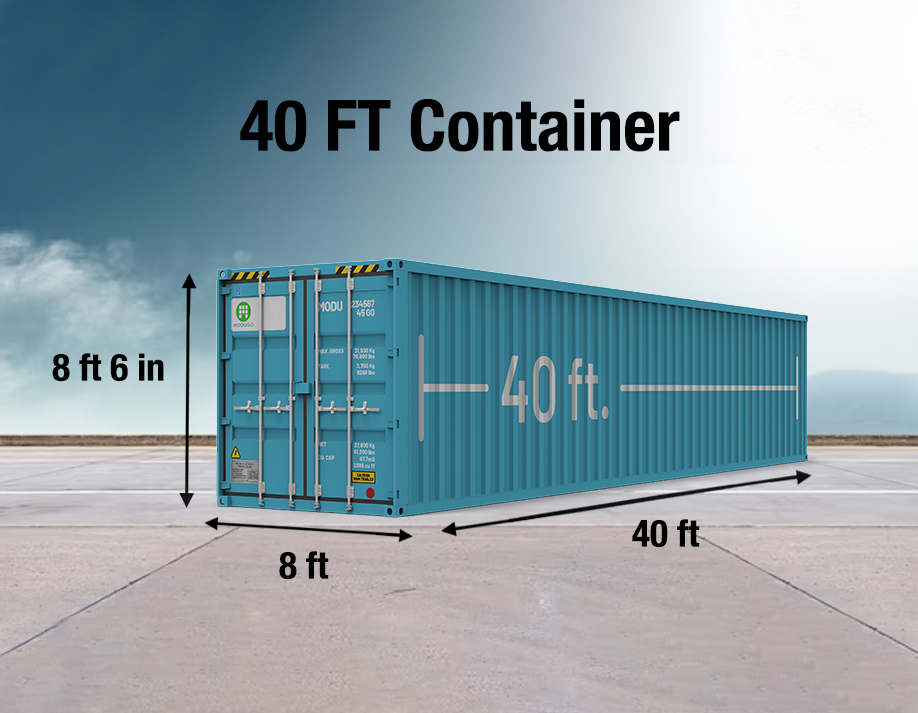Understanding the Significance of a Forty-Foot Equivalent Unit (FEU) in Shipping

The Forty-Foot Equivalent Unit (FEU) is a standard unit of measurement used in container shipping to estimate the capacity of cargo containers. It refers to a feu container that is 40 feet in length, which is the most common size used for international shipping. Its high usage rate is due to its compatibility with various types of goods, such as pallets and large machinery.
The FEU is an important metric in shipping because it allows for easy comparison and planning of cargo capacities across different containers and vessels. By standardizing the capacity measurement, it becomes easier for shippers, freight forwarders, and logistics providers to calculate costs, allocate resources, and optimize their operations. Additionally, companies can store cargo efficiently using these standardized units, ensuring space management is optimized.
The FEU is also crucial for determining freight rate calculations and pricing in the shipping industry. Many shipping companies and carriers charge based on the number of FEUs needed to transport a certain volume of cargo. By having a standardized unit of measurement, it becomes easier for both the shipper and the carrier to negotiate terms and agree on fair pricing, facilitating efficient trade operations. This is especially important for long-haul shipments that involve multiple items and services, ensuring each container’s capacity is maximized.
What is a Forty-Foot Equivalent Unit (FEU) in Shipping?
A Forty-Foot Equivalent Unit (FEU) is a standard unit of measurement used in the shipping industry to calculate the capacity of container ships and storage facilities. It refers to the volume of a standard forty-foot container and is used to determine the number of containers a vessel can load or the amount of cargo that can be stored in a terminal. The FEU is important for the industry, especially when measuring volume and length, as well as ensuring compatibility with pallets and other packaging materials used for goods.
The FEU is an important metric in shipping because it allows for standardization and efficient planning of cargo transportation. By using a consistent unit of measurement, shipping companies and terminals can accurately estimate the space required for different types of cargo and optimize their operations. The container’s size also facilitates better cost management, as the shipping industry frequently uses the FEU for shipment cost assessments.
The standard forty-foot container is a widely used unit in the shipping industry due to its versatility and compatibility with various transportation modes, including sea, air, and land-based logistics. Its length and height are important factors in calculating rates, and the container can accommodate goods such as consumer electronics, machinery, and other large or bulky items.
When calculating the capacity of a container ship or storage facility, the size of the cargo is not the only factor to consider. The weight and volume of the cargo also play a role in determining the number of containers that can be loaded or stored. The FEU takes into account both the length and height of the container, allowing for an accurate measure of its capacity.
In addition to the FEU, there is also the Twenty-Foot Equivalent Unit (TEU), which is based on the size of a standard twenty-foot container. Both the FEU and TEU are commonly used in the shipping industry and provide a standardized way to measure and compare container capacities, helping businesses and logistics management to plan more efficient transportation routes and allocate resources.
Conclusion
The Forty-Foot Equivalent Unit (FEU) is a crucial measurement in the shipping industry. It allows for efficient planning and optimization of cargo transportation, ensuring that goods can be transported in a standardized and cost-effective manner. By using the FEU, shipping companies and terminals can accurately estimate the space required for different types of cargo and streamline their operations. This is particularly important for companies that need to transport high volumes of cargo across international trade routes.
Understanding the concept of a Forty-Foot Equivalent Unit (FEU) is essential for anyone involved in the shipping industry. It provides a standardized measure for container capacity and enables efficient logistics planning and cost calculations. By utilizing FEUs, businesses can optimize their shipping operations and make informed decisions regarding their freight transportation needs.
Significance of the Forty-Foot Equivalent Unit in the Shipping Industry
The Forty-Foot Equivalent Unit (FEU) is a standard unit of measurement used in the shipping industry to quantify the capacity of cargo containers. It represents the cargo capacity of a standard 40-foot container and is widely used by shipping companies, port operators, and logistics providers. The use of standardized units like the FEU and TEU simplifies cargo handling, making the entire process more efficient.
The FEU is an important metric in the shipping industry as it allows for efficient planning and utilization of container vessels, terminals, and transportation networks. By knowing the number of FEUs that can be accommodated, shipping companies can optimize their operations, reduce costs, and increase overall efficiency. This is particularly useful when dealing with ocean shipping, where space and container optimization are key to reducing delays.
The use of FEUs also simplifies the process of cargo handling and documentation. By standardizing container sizes, it becomes easier to calculate transportation costs, allocate space on vessels, and track shipments throughout their journey. This standardized approach saves time and resources for shipping companies and improves the accuracy and reliability of shipping schedules. Due to its importance, understanding the capacity and specifications of a foot equivalent unit feu is essential for business success.
In addition, the FEU has become a global standard, enabling seamless international trade. It ensures compatibility and interoperability between different shipping companies and ports worldwide. This standardization facilitates the smooth movement of goods across borders, reducing delays and improving the overall competitiveness of the shipping industry.
Overall, the Forty-Foot Equivalent Unit (FEU) plays a crucial role in the shipping industry by providing a common measurement unit for cargo capacity, enhancing efficiency, and promoting global trade. Its significance cannot be overstated, as it enables smooth operations and cost-effective logistics in the complex world of maritime transportation.
Solutions:
- Describe your company’s solutions using our shipping glossary.
- Get in touch with us to learn about our services.
- We provide platform support for international cargo and container management.
We also comply with the privacy policy for managing your data, ensuring your information is protected as you engage with our services.
